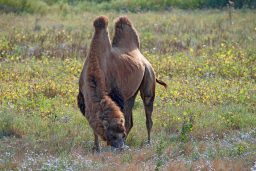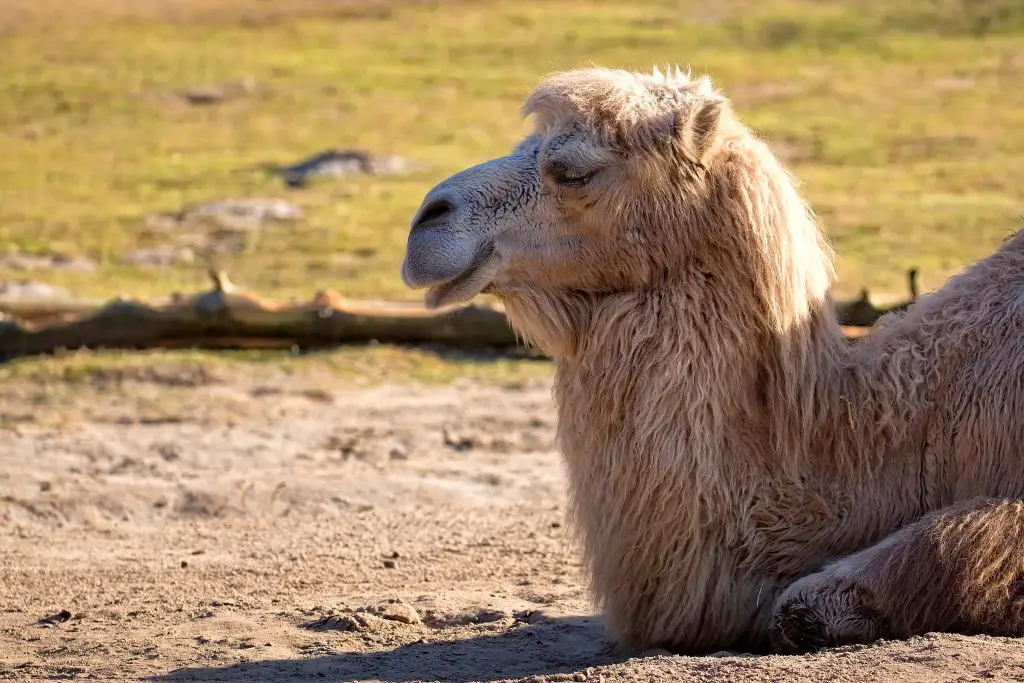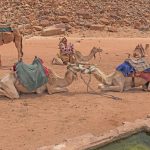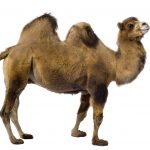They prefer foliage and grasses – but this isn’t always possible so they will literally eat anything to stay alive. Camels don’t always have a choice for food.
What Do Camels Eat In The Desert?

There are actually three types of camel in the world today and they do in fact live in different habitats – it isn’t all sandy desert. The Dromedary (Camelus dromedarius) is the most common camel and lives across northern Africa and into Asia in your typical desert environment. However, the domestic Bactrian (C. bactrianus) and the Wild Bactrian (C. ferus) live across the entire expanse of Eurasia – from the Black Sea to Central China.
Camels mainly browse on foliage including branches, stems, buds, and leaves of trees. With over 300 plants found in their diets – including acacia, euphorbia, trifolium, and brassicas – they have a great choice. However, they will eat literally anything they find – more so if they are in a particularly barren area or are up in the mountains.
They can eat any plant they want- including really thorny ones. Camels have really thick skin on their lips and tongue – so aren’t put off by really sharp plants. In an environment where they can’t be choosy over what they find for dinner (they can graze for 12 hours a day) – they have found a way to chew up almost anything. And it doesn’t just need to be planted either.
In extreme instances, they are documented as eating flesh, carcasses and licking bones to gain moisture and minerals if plant material is scarce. Camels have even been known to eat clothes, rope, tents and shoes in desperate times – in the hope of extracting nutrients from anything.
Are Camels Vegetarian?

Camels in an ideal world are vegetarian. Being herbivores they will eat almost any plant they find and generally focus on foliage and grasses. They will also eat rather spiny plants (quite common in desert shrubs) and have evolved a range of facial features that take away the pain from this – including thick skin, a wide mouth, self-closing nostrils, and thick eyelashes.
In the desert, there isn’t always a guarantee of finding food – and so camels need to be versatile. Eating anything from trees to grass, vines to herbs – they will give it a go. Their gut is mainly set up for plant matter – so ideally this is their go-to food when it is available. They can go for nearly 2 months without food though – so they can potentially be a little bit picky when they want.
Do Camels Eat Meat?
Camels aren’t completely vegetarian though – as they will certainly eat meat if they need to. Survival means everything to them – and if they can’t get enough nutrients from their usual plant-based sources – or they can’t find any plants at all – they will certainly chew on, lick, or eat meat and bones.
They aren’t hunters though by any means – and catching and killing other animals isn’t on their agenda. They won’t go seeking them out. Almost all of their meat consumption will be from carcasses they have found or come across – and they won’t eat this type of food if there is plenty of plant matter available to them. This is really just last resort food.
Can Camels Eat Cactus?
Camels would rather stay alive than be fussy over food – so yes, they would certainly eat a spiny cactus if they needed to. With their specially adapted mouths and faces – eating something spiky isn’t that much of an issue anyway – and so a cactus-eating camel isn’t so unusual after all.
With such a restricted choice of food sometimes – it is a good job that camels have evolved such a wide palette. As they evolved into the camels we know today, it is most likely that only those ancestors who tried everything (and survived) were able to reproduce successfully. So over time – their ancestors paved the way for such an extravagant menu. Camels are ruminants and so their almost continuous cud-chewing can break down even the toughest of plant fibers.
It is a great survival tactic to be able to eat and gain nutrients from almost anything – although those shoes might have required quite a bit of extra chewing?
Camels are mainly herbivores and eat branches, stems, buds, and leaves of trees. With over 300 plants found in their diets. In extreme cases camels has been seen livking bones.






